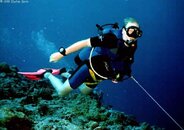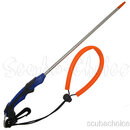3D diver
Contributor
Could you post pics of reef hooks and how does one hold on to them?
+1 on that request.
These things aren't universal...I'd never heard of one 'til I joined the SCUBA board.
I was diving yesterday and noticed a guy cruising along poking the bottom with a short metal rod and thought "huh...I'll bet that's a reef hook..."





